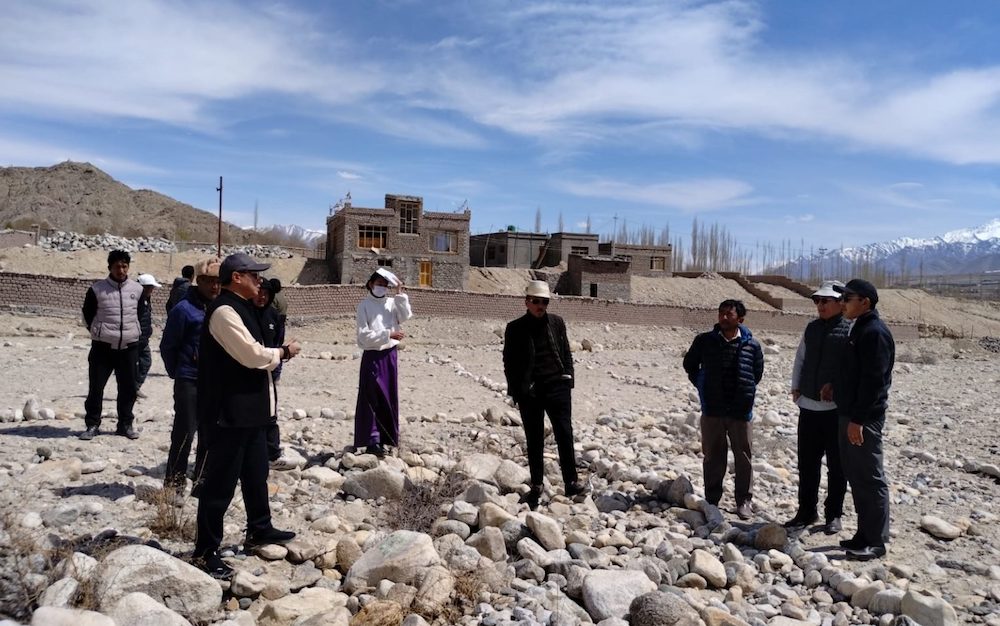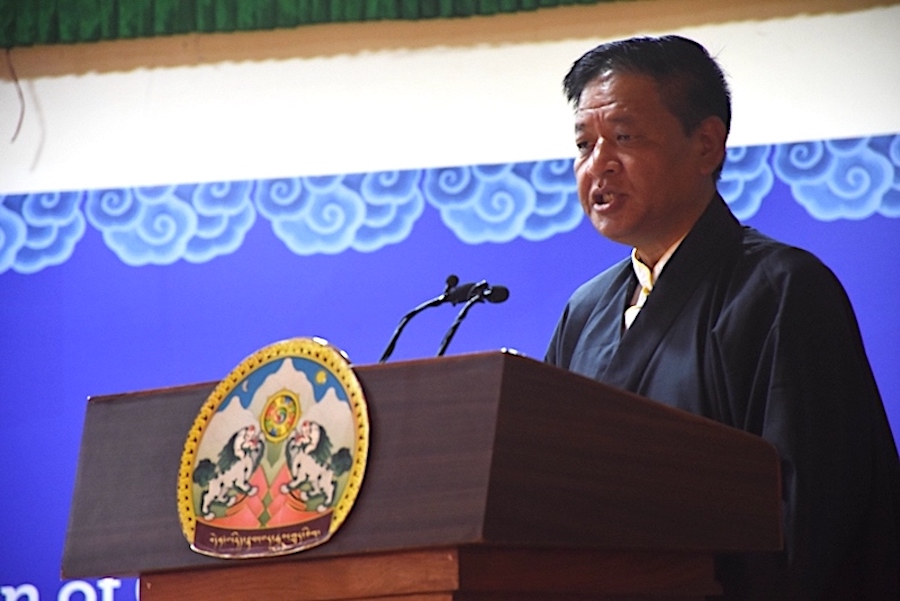By Tsering Tashi
LONDON, June 23 – The closing ceremony yesterday of the Sand Mandala created by monks of Drepung Loseling Monastery from India here at the Victoria and Albert Museum attracted more than 3000 people and helped to generate further interest in the Tibetan culture and cause.
Mr. Tsepak Rigzin, the spokesperson-cum-translator of the eight touring monks, told the huge gathering that the purpose of creating the sand mandala was to ‘heal the world’ and showcase the artistic tradition of Buddhism that is more than 2500 years old. The mandala, painstakingly created by the monks on a wooden platform a few days before by pouring coloured sands through metal funnels over a carefully drawn outline, stood in front of offerings placed before some traditional Tibetan thankas (sacred scroll paintings) hung on the wall.
“As is the tradition, the sand mandala will be destroyed by Geshe-la (head of the participating monks) to show the impermanence of life. The sand will be swept up and placed in a vase. To fulfil the function of healing, half will be distributed to the audience and the remainder will be carried to the nearby river and deposited there to be carried to the ocean to be spread throughout the world for planetary healing,” Mr. Rigzin told the attentive audience.
He also introduced Mrs. Kesang Y. Takla, Representative of His Holiness the Dalai Lama for Northern Europe at the Office of Tibet, London, who had been especially invited for the closing ceremony. He told the audience to contact the Office of Tibet for any information relating to Tibet.
Mr. John Clarke, the museum’s curator of Tibetan collections, told the gathering how the museum was honoured to be involved with the sand mandala event and asked the people to send postcards to the museum so that they may be able to again bring back the artistic work of the Tibetan monks.
“The response from the public has been very warm and it shows there is interest in the Tibetan culture. I hope we can collaborate with the Drepung Loseling Monastery in the future also,” Mr. Clarke told this writer after his presentation.
Another notable figure in the audience was Ngawang Sangdrol, who arrived in the United States in late March following her release from prison in Tibet by the Chinese authorities. Now aged 26, Ngawang Sangdrol was first arrested in 1990 as a young 13-year-old Buddhist nun and became known as one of Tibet’s longest serving female political prisoners until her release. She is in London at the invitation of the Free Tibet Campaign and yesterday evening attended a reception in her honour hosted by the Tibetan Community in Britain.
“This is the first time in my life to witness a sand mandala,” a visibly bemused Ngawang Sangdrol told this writer.
According to Mr. Tsepak Rigzin the public response to the sand mandala and the accompanying performances by the monks wherever they have been has helped to generate a lot of goodwill for the Tibetan culture and cause. Since last September they have been on tour to different parts of the United States and Denmark.
“Through our tours we have seen that through effective portrayal of the Tibetan Buddhist culture we can generate a lot of support for the just cause of Tibet,” Mr. Tsepak Rigzin later told this writer. He added, “I feel that the contribution made by His Holiness the Dalai Lama towards world peace and healing is the main inspiration behind the success of our tour.”
After their remaining performance in London and Manchester, the Loseling monks and their translator will be in Greece where they are scheduled to represent Tibetan Buddhism at the International Cultural Olympiad at Athens and other major cities during the first two weeks of July. Mr. Tsepak Rigzin, who is temporarily helping the Drepung Loseling monks’ tour is on a year’s sabbatical leave from his teaching profession as the principle of the Central School for Tibetans in Mundgod, South India. He said the tour has given him much experience and understanding of how much potential Tibetan Buddhism has to serve humanity.
“The monks’ multi-phonic chanting has left impeccable impression in the minds of the people, thus seizing the opportunity to appreciate the basic principles of Tibetan Buddhism. It also confirms that Tibetan Buddhism can be a very strong tool to connect peoples across various culture, religion and faith,” he said.









